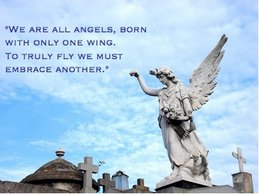I can't thank Magnificent Jim of Gateway Pundit for his tireless support of the Iranian activists in the U.S. . This is his latest post, which I'm shamelessly reprinting below:
Today, one of the surviving prisoners tells his story at The Persian Journal.(Photo is from a previous regime prisoner execution in 1979)
Bahman Aghai Diba, PhD () at the The Persian Journal today reported on the forgotten slaughter by the mullahs in 1988.It is an amazing story:
Mass murder of 1988 in IranIt was the end of Iran-Iraq war (1980-1988) and I was sent to Evin Prison for an indefinite time. The Agent of the Intelligence Ministry who was escorting me to the prison let me lift my eye-cover and look around. He said: you are not going to leave this place alive, so have a look.In those days, eye-cover was an essential part of the prison attire and no prisoner was allowed to be without it. The Evin Prison was a beautiful place in the foothills of Alborz Mountain in the north Tehran. It had been turned into a security prison at the time Shah, but the Islamic Government had turned it into an independent unit. Evin had everything inside it: the revolutionary court, office of the revolutionary prosecutor, the solitary cells, public prison, and office of the Intelligence Ministry, women's section, execution chambers and even the clergies' ward. I was thinking that the prison must be overcrowded because so many people were arrested those days and taken there. However, I came to know that the prison was almost empty. The few prisoners who had remained acted as zombies. They did not show any interest in talking to anyone. It took a while to get to know that the judicial and prison officials had killed several thousand prisoners within a few days. During the several years that I spent there, I came to know many part of this issue little by little, but I was always surprised why the people and organizations outside of prison, inside and outside of Iran, did not talk about such a horrible mass murder at all. Later, when I had a meeting with the Representative of the UN Human Rights Commission (Dr. Galindo Pohl), as one of the prisoners who had been interviewed by the UN Delegation, I was surprised that even he did not ask me or any other prisoner (as far as I know after talking to the persons that I knew) about this case.What happened, what that at the end of Iran-Iraq war, while Iran had accepted the UNSC 598 Resolution to end the war, the forces of the MKOs (Mujahedin Khalgh Organization) were staging an attack from the Iraqi borders. The Iranian army was pushed back by Iraqis who were using chemical weapons in large scale and the tactic of human waves of the Iranian military leaders had failed. Khomeini had "drunk the chalice of poison" and if the Americans did not stop the Iraqi army, Saddam wanted to recapture all territories that had got at the beginning of the 8 year war. Out of the fear of the collapse of the regime, the so called Founder of the Islamic Republic, Mullah Khomeini, ordered all prisoners in Evin and couple of other security prisons (like Kachoi Prison in Karaj) to be asked one question: "do you insist on your positions?" Whoever answered in a way that indicated that he or she had not repented was sentenced to immediate execution. The mass killings were conducted under the supervision of several persons: Lajevardi, the Head of Evin Prison, Mullah Naieri in the revolutionary court, Mullah Niazi in the office of the prosecutor. They were rewarded dearly later: Lajevardi (the Bucher of Evin) became the Head of the Prisons Organization of Iran; Mullah Nairi became the Head of Center for Execution of Imam's Instructions (this is one of the less known organizations in Iran which controls most of the properties of the wealthy people from the time of Shah that have been confiscated. It has huge assets all over Iran and it makes considerable contributions to Mullahs that follow the orders of the so-called Supreme Leader), and Mullah Niazi became the Head of the State Inspectorate Organization. The Mullahs that were issuing death sentences were flying by helicopter from one prison to another every day and asking the only question that was on the table. I heard any number from 3 to 8 thousand for the mass murdered prisoners... They used also firing squads. The murdered prisoners were carried by big trucks and dumped in a place outside of Tehran in an area called Khavaran, in the mass graves that were unmarked. The relatives of the prisoners were left uniformed and those who somehow came to know the reality were not allowed to have public mourning ceremony.
Read the rest of the gruesome story at The Persian Journal.

 ABF, for the promotion of human rights and democracy in Iran
ABF, for the promotion of human rights and democracy in Iran



1 comment:
Galindo Pohl didn't even know about it! Typical!! They still talk about 28 Mordad when they want to sound like "Iran experts".
Thanks for this Winston.
Post a Comment